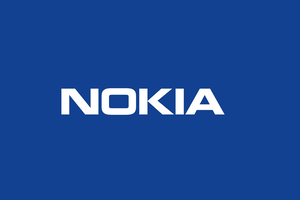Nokia and China Mobile (CMCC) have successfully completed live trials of an Artificial Intelligence (AI) powered radio access network (RAN) over CMCC’s network.
Utilising CMCC’s 4G and 5G networks, the companies completed an AI based real time user equipment (UE) traffic bandwidth forecast trial in Shanghai as well as a network anomaly detection trial in Taiyuan, the capital city of China’s Shanxi province.
During the trial, China Mobile introduced its ‘i wireless intelligent and simplicity 5G network’ concept, a series of technologies designed to create a greener, smarter and more efficient 5G network. The near real time RAN Intelligent Controller (RIC) is one of these technologies and a new network element that enables near real time control and optimisation of RAN elements enabled by real time data exposure and cross layer perception capabilities utilising AI and ML applications.
In the trial, the RIC was included in the edge cloud using Nokia’s AirFrame Open Edge server platform. The RIC platform enables increased network optimisation capabilities through policy guided, closed loop automation. These are fundamental to further advance the 5G RAN architecture, enabling a wide range of intelligent, real time data driven, network automation and optimisation applications.
In Shanghai, the trial confirmed that AI based real time user equipment (UE) traffic prediction accuracy exceeded 90% in a live 5G network test. This was achieved by estimating the UE radio quality and related throughput for 100 milliseconds. With the real time RAN data exposure capability, Nokia’s 5G AirScale basestation was able to send UE radio quality information to the RIC in real time, which is critical for the accuracy of the predictions.
Nokia and CMRI worked together to design the trial solution The trial’s test specifications were defined by the China Mobile Research Institute (CMRI), Shanghai Mobile and Nokia.
Nokia, Shanxi Mobile and the China Mobile Research Institute (CMRI) also trialed network anomaly detection technology. The trial examined network operation automation using CMCC’s 4G/5G network across more than 10,000 cells. With the AI/ML technology assistant, network problems were detected more accurately and automatically. The AI/ML powered anomaly detection solution can drastically decrease the time needed to analyse issues and find the root cause. For operators it represents a cost saving of more than 70% on human resources required to process the issues. Nokia’s anomaly detection platform software (SW) architecture offers a distributed and split SW architecture and is suitable for non real time and near real time RIC deployment.
Huang Yuhong, deputy director of China Mobile Research Institute, says, “RIC plays a key role in enabling AI/ML (machine learning) capability in the RAN, which is of great significance to realise the concept of the ‘i wireless intelligent and simplicity 5G network’. Nokia and CMCC’s trials are very meaningful for RIC commericalisation. China Mobile has put effort into the AI assisting RAN network technology. We are pleased to complete these trials using AI to forecast UE transmission bandwidth and detect anomalies on CMCC’s live network with our partner Nokia. The field trial proved the availability of RIC enabling network enhancements through customised real time BTS data analysis and control.”
Pasi Toivanen, head of edge cloud platforms BU at Nokia, comments, “We are excited to have worked with China Mobile on this project to advance RAN network intelligence. We believe it will a be a key asset in improving the wireless network efficiency and the experience of its subscribers. This is an example of Nokia’s committment to supporting our customers in the delivery of world class network performance.”
Comment on this article below or via Twitter: @VanillaPlus OR @jcvplus






